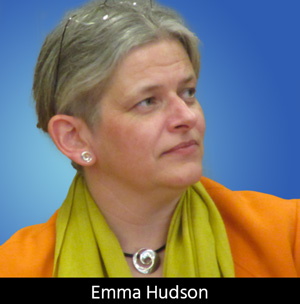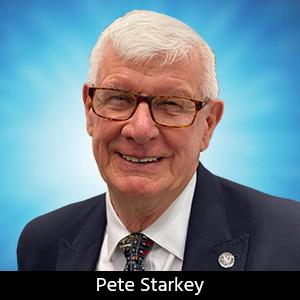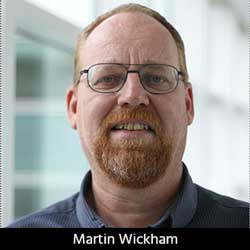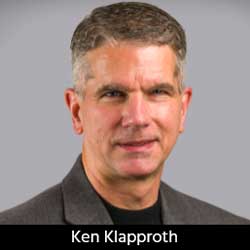|
|
ICT Webinar Review: Pete Starkey, I-Connect007 |
 |
Since its establishment in 1974, the Institute of Circuit Technology has continued to keep the UK's PCB technologists and engineers up-to-speed with developments in the industry. While operations are progressing back toward normality, it may be some time before its seminars are re-established as physical gatherings that combine learning with informal opportunities to network. But the Institute continues to deliver first-class on-line events. This year's ICT Autumn Webinar on September 7 presented papers by leading experts on high-voltage testing and advanced antenna materials. It was introduced and moderated by ICT Chair Emma Hudson. |
|
Martin Wickham |
High-Voltage, Partial-Discharge Testing of PCBs and Coatings Martin Wickham Martin Wickham, senior research scientist at the National Physical Laboratory, gave an insight into current work on high-voltage partial-discharge testing of PCBs and coatings. There was an industry trend toward higher operating voltages, particularly in automotive and power electronics applications. Ceramic-based devices had been the traditional choice for power modules, although these were associated with heavy weight and high cost. The potential benefits offered by organic printed circuit substrates tended to be limited by electrical discharge effects. Whereas full electrical discharge was a relatively well-known phenomenon, typically associated with catastrophic failure, partial discharge was not as clearly understood, and was currently being investigated. What was the nature of these effects? Wickham began by describing full electrical discharge in terms of the breakdown that occurred when a strong electric field pulled valence electrons from their atoms, rendering them mobile, and he gave comparative figures for air and PTFE as examples of low and high breakdown field strength. By comparison, partial discharge occurred as a “spark” in the insulation between two conductors at a point where the electric field exceeded the local dielectric breakdown strength. This could occur multiple times and progressively reduce the breakdown strength of the insulation. Paschen's Law defined breakdown voltage in terms of the product of gas pressure and the distance between electrodes, and had particular significance in aerospace applications because of the variation of pressure with altitude. Wickham explained that partial discharge occurred when the rate of change of voltage was highest, and that higher frequencies increased the likelihood, along with higher temperatures and lower pressures, although several complex interactions were also involved when factors like voltage waveform, humidity and contamination were considered. Collaborative projects at National Physical Laboratory had evaluated a range of antennas for detecting partial discharge at ambient and lower pressures. The range included circular antennas, PCB-based and commercial off-the-shelf, long and short monopoles, and twisted insulated-wire pairs. The twisted pair had been chosen as the test vehicle, and the current work-plan was to study the effects of frequency, overvoltage, atmospheric pressure, and waveform. Wickham described the test equipment, remarking that health and safety had been a primary concern since it was capable of operating at voltages up to 5kV. The electrical system included a power supply unit, waveform generator, and high-voltage amplifier. A vacuum chamber enabled pressure to be reduced to 0.1 bar, and insulation resistance was simultaneously monitored as the test materials progressively aged. He showed examples of partial discharge test results on a twisted wire pair, using a 500Hz sinusoidal signal. Partial discharge spikes could be observed twice per cycle at an inception voltage of 3.8kV peak-to-peak, equivalent to an RMS voltage of 1.343kV. The extinction voltage was 3.2kV peak-to-peak and the sample had an insulation resistance of about 50GΩ. After aging the sample for 8.5 hours with a sinusoidal 1kHz waveform at a voltage set to 3.8kV to support continuous partial discharge, insulation resistance had fallen to less than 10MΩ. The current work plan was to study the effects of frequency, overvoltage, atmospheric pressure, and waveform—sinusoidal or square-wave. Coatings were being studied in a separate experiment, observing surface insulation resistance, dielectric withstanding voltage and dielectric breakdown on B24-type test coupons with commercially available conformal coatings, aged in a normal 50Vdc SIR test in an 85°C/85%RH environment. No degradation in surface insulation resistance had been observed during a 1000-hour test. Neither did the samples show any disruptive electrical discharge during a one-minute dielectric withstanding voltage test at 1500Vac. Leakage current was less than 10 microamps, which complied with IPC and ASTM specifications. When a 3.6kV peak-to-peak 50Hz square wave signal was applied, some partial discharge could be observed. In another example, a 1kHz sinusoidal signal at 4.22kV peak-to-peak resulted in dramatic drop in insulation resistance and failure after only five minutes. Further work was planned using a test coupon designed by Manchester University, and three suppliers had agreed to provide coating samples for evaluation. National Physical Laboratory was seeking collaboration from PCB fabricators to advise on representative track-and-gap dimensions and to produce coupons on a broader range of materials. Wickham stressed the significance of the work, since the increasing uptake of high voltage electronics would inevitably result in more damage by partial discharge in PCBs, even if the power module designers continued to specify ceramic substrates. |
|
Ken Klapproth |
The ‘Last Mile’ Challenge Ken Klapproth “Despite decades of technological evolution, connectivity remains a challenge for 5G,” said Ken Klapproth, chief marketing officer at CHASM Advanced Materials, in his opening statement, then continued to describe how a new category of advanced materials enabled overcoming the “last mile” challenge. Reviewing the history of the mobile phone through its successive generations over the past 40 years, from early analogue systems to present-day emerging 5G, it is an undeniable fact that calls still drop out. Despite its lower latency and its enormous increase in traffic capacity and network efficiency when compared with its 4G antecedent, connectivity remains a challenge with 5G since its operating wavelengths have comparatively limited range and signals that could be interrupted by natural surroundings and physical obstructions. “With many technological advances, it seems like it’s always one step forward and two steps back,” he said. “Sometimes as engineers we make our own mess.” Klapproth envisages an explosion of antennas: it is forecast that the worldwide rollout out of 5G, smart and internet-of-things will necessitate tens of billions over the next four or five years as all this unified connectivity will rely on an antenna to connect each device to the network. Even with the benefit of advanced antenna technologies, most connections will need to be line-of-sight to permit high data rates and minimise interference. There will be 5G cell towers and antennas everywhere, on every lamppost and traffic light. And the interiors of factories and office buildings will be smothered with wireless access points. How could those antennas be hidden, or placed in inconspicuous locations, while remaining close to people? And what about autonomous vehicles and advanced vehicle safety systems? Window glass has been recognised as a potential solution, in buildings, machine enclosures and vehicles: generally well-positioned and with adequate area, but antennas needed to be transparent for both practical and aesthetic reasons. Klapproth discussed the properties of new materials that could resolve design challenges and fulfil the requirement. He explained that antennas were typically fabricated using strongly conductive metals such as silver, copper, or aluminium, with electricity being conducted in the form of radio waves. Skin effect, the tendency of an alternating current to be distributed within a conductor such that the current density was highest near the surface, increased with increasing frequency. At radio frequencies the current effectively flowed only on the surface of the conductive material, so that high frequency transmissions could be supported by very thin materials. Few available materials were both conductive and transparent. Indium tin oxide had been dominant in the market, but imaging to form conductive patterns was complicated and expensive. A new category of materials known as nanotube hybrids provided the required conductivity and the desired transparency, and could be imaged by simple screen printing rather than laser ablation. Nanotube hybrids were enablers for transparent antennas; Klapproth reviewed their composition and structure. His high-magnification illustration showed a random array of metallic rods which were silver nanowires, embedded in a spaghetti-like matrix of single-wall carbon nanotubes. Conductivity could be increased by adding more silver nanowires or increasing their diameter, although this would also result in reducing transparency. The hybrid material overcame the traditional trade-off between conductivity and transparency, taking advantage of the unique properties of nanotubes: self-assembling and rendering the non-conductive areas between the nanowires conductive, as well as bonding the wires together, supporting applications such as bending or thermoforming. Even if the conductive rods were to be broken, there was sufficient conductive redundancy in the nanotubes to enable the signal to continue to be transmitted. These materials were more conductive and more transparent than any of their commercial alternatives. How to make connection to the transparent conductive film? Standard metal-mesh and silver nanowire films required some sort of over-coating for environmental protection, although this effectively isolated the conductive layer and needed to be etched, mechanically abraded or laser ablated in order to make connection. By comparison, in nanotube hybrids the carbon was environmentally stable and protective against moisture as well as being capable of making external electrical connections. Klapproth showed an example of an antenna circuit fabricated by simple screen printing of a nanotube ink on to a metal-mesh film, the ink doubling as an etch resist, then etching away the exposed metal mesh. He referred to real-world projects and applications. His example of a monopole Bluetooth antenna demonstrated that carbon nanotube hybrid out-performed copper in gain and frequency response. |
|
Emma Hudson moderated a productive question and answer session before bringing another successful ICT webinar to a close, thanking all who had participated and acknowledging the proficient organisation of the event by technical director Bill Wilkie. She was optimistic that a physical seminar would be possible before the end of the year. |
|
 |
Published by kind permission of Pete Starkey, I-Connect007 |
| Go back to Contents |


